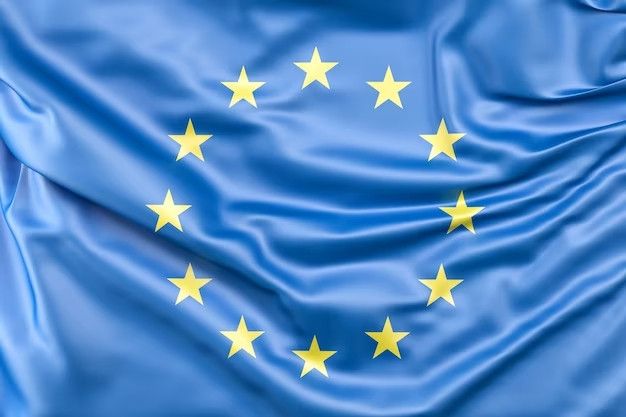Are there differences in the assessments of Serbia's progress when it comes to harmonizing legislation with the EU acquis related to Chapter 27, in the Coalition 27 Report and the Report of the European Commission? How far has Serbia really come in the field of environmental protection? All things considered, what is the line between limited progress and regression
The period covered by the reports was marked by increasing interest in the state of the environment, which finally materialized in environmental protests in the fall of 2021. In the same period, the European Union clearly proclaimed that the recovery from the pandemic will be in the spirit of the European Green Deal and its goals, so that in December, Serbia finally took the next step in the negotiations with the EU when Cluster 4 was opened - "Green agenda and sustainable connectivity," which includes Chapter 27 – Environment and climate change. In this political and social context, the new report of Coalition 27 (C27) entitled "One step forward, two steps back" presents a valuable review of information on the harmonization of Serbian legislation with the EU acquis in the field of environmental protection and Chapter 27, in the period from January 2021 until March 2022. The same can be said for the newly published report of the European Commission (EC). Although the reports do not cover an identical time period, the key findings and recommendations largely overlap.
The general assessment of the C27 report is that Serbia is moving away from the European Union in matters covered by Chapter 27. The recovery from the pandemic in the EU is marked by strengthened efforts towards decarbonization and reaching the ambitious goals of the European Green Deal. On the other hand, the transposition, and especially implementation of EU acquis in domestic legislation is slow. From the Negotiating Position of Serbia for Chapter 27, it is clear that the deadlines for the transposition and implementation of certain acts have expired. Therefore, the name of Report C27 is quite appropriate. The biggest shortcomings are: limiting public participation in decision-making processes, non-adoption, and especially non-implementation of key legal acts, lack of capacity of central and local authorities, as well as insufficient information on financial resources allocated for projects.
When it comes to the European Commission's report, it states that Serbia has reached "some level of preparation in the field of the environment," which on a scale of 1 to 5 represents a rating between 2 and 3. We received a similar assessment regarding progress, which was assessed as "limited", mainly due to the 50% increase in financial expenditures for the environment, the improvement of transboundary cooperation, as well as the start of the development of the National Climate and Energy Plan (NECP). However, the adoption of some significant legislative and strategic documents is still pending. The recommendations from the previous Report of the EC are largely relevant even now, which indicates that Serbia is making slow progress in this area. They are directed towards the strengthening of administrative and financial capacities both at the local and national level, additional efforts towards the implementation of regulations and finally, the adoption and adequate implementation of the National Climate and Energy Plan (NECP) in accordance with the EU Green Agenda for the Western Balkans.
Although there has been an increase in activities in the field of horizontal legislation, the key acts, namely the Law on Environmental Impact Assessment and the Law on Strategic Environmental Impact Assessment, have still not been adopted. The practice of limiting public participation in the adoption of public policy documents has continued. Thus, for example, the Proposal for the Law on Amendments to the Law on Water and Proposal for the Law on Amendments to the Law on Integrated Prevention and Control of Environmental Pollution entered the parliament under an urgent procedure, without any public participation.
In the report of the European Commission, the situation is similarly evaluated. The legislative framework in this area was evaluated with a high compliance score, but additional work is necessary to improve the Law on Environmental Impact Assessment and Strategic Environmental Impact Assessment. As in the Coalition's report, the practice of project splitting, in which one project with a significant environmental impact is split into several smaller ones to avoid the need to conduct an environmental impact assessment, was condemned. The only essential difference concerns transboundary consultations. While, according to the Commission, progress has been made there, due to the fact that the Draft Spatial Plan of the Republic of Serbia from 2021 to 2035 (SPRS) is available for public inspection in Bulgaria and Romania, the Coalition's report clearly states that Serbia notified the neighboring countries too late, thus violating the Law on Strategic Environmental Impact Assessment.
As far as climate change is concerned, "quasi" progress has been achieved. The long-awaited and long-prepared Law on Climate Change was adopted, but it is practically unenforceable because numerous by-laws are missing that would regulate more closely the areas to which the Law applies. An additional problem with the Law is the fact that it does not cover all of Serbia's obligations arising from the Paris Agreement and membership in the Energy Community, such as Nationally Determined Contributions and reporting on their implementation. The development of the Integrated National Energy and Climate Plan (NECP) has begun, in order to harmonize the goals of zero emissions by 2050 with the goals of the EU. However, as stated in the C27 Report, contrary to the Commission's recommendations that the NECP should be drafted in a transparent and participatory manner, the public was involved late in the drafting of the document, one year after the formation of working groups. It also highlights that climate change policy is not integrated into other sectors, which makes its implementation much more difficult. As an example, the case of the Draft SPRS, which envisages the construction of new thermal power plants, is in contradiction with the proclaimed objectives of the climate policy of the European Union.
The Commission's report follows this line of findings of the Coalition 27 report and recommends that Serbia increase efforts towards diversification of energy sources, development of renewable energy sources and reduction of energy intensity in order to get closer to the goals of the Green Agenda. One of the differences is that the EC assessed the current process of creating the NECP as a process with broad participation of stakeholders.
In the area of air quality, compliance with the EU acquis was assessed as being at a good level in the Report of EC. It is necessary to make changes to the Law on Air Protection in order to finalize that process, but this was not done in the reporting period. Drafting of the national Air Protection Program has begun. The air in Serbia is of very poor quality. Non-compliance with the National Emission Reduction Plan was identified as one of the biggest problems, reflected in the multiple exceeding of emission limit values of sulphur-dioxide from thermal power plants covered by the document. As stated in the C27 report, almost 2.5 million citizens were exposed to excessive concentrations of PM10 and PM2.5 particles. There is also a noticeable trend of expanding monitoring stations for measuring air quality, as well as increasing the reliability of data, but around 1.35 million citizens still do not have information about air pollution, since local monitoring is insufficiently developed.
The report of the European Commission is in accordance with the findings of Coalition 27. According to the Commission, it is necessary to adopt the EU Air Quality Index, increase the capacities of the Environmental Protection Agency for air quality monitoring and urgently respond to the pollution caused by the operation of the Kostolac B power plant.
The findings of these two reports largely coincide, although the European Commission's report is colored by diplomatic language and slightly more optimistic assessments. It can be concluded that, in the previous period, Serbia made limited progress at best. If we take into account the EU's latest efforts to recover from the pandemic and the pursuit of the European Green Deal, the question is whether there has been any progress or, in this context, Serbia has even regressed.
Authors: Damir Dizdarević and Lazar Jovčić
The text was originally published in the 89th issue of the Bulletin on Negotiations.
Photo source: Freepik.com

